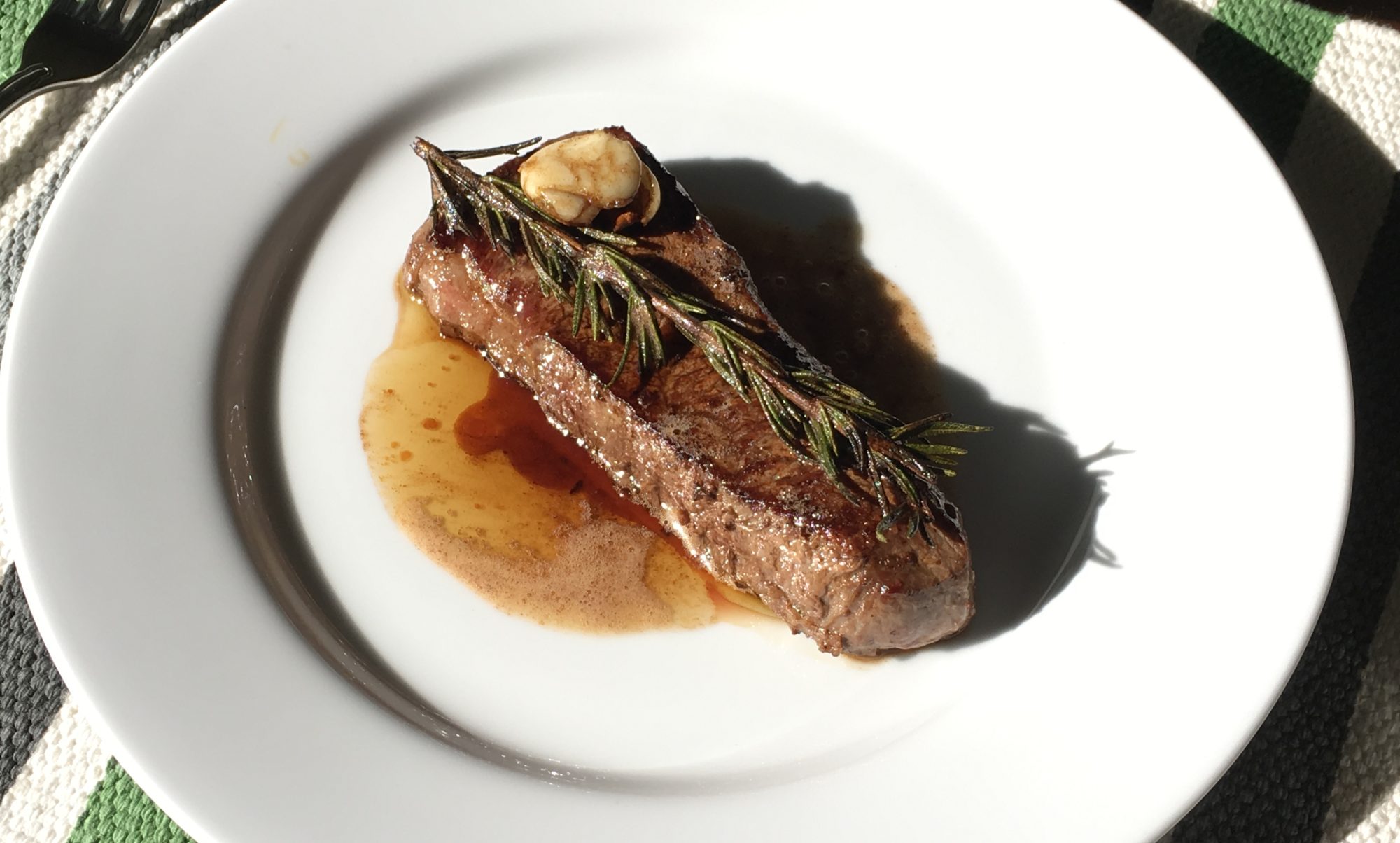Your first Searing Experience
Whether you’ve seared steaks many times, or you’re just beginning to dabble, keeping it simple never yields a bad result.
Ribeyes: the undisputed king of steaks. An inch and a quarter thick or more is best. Set that bad boy out on the counter a half hour before cooking and rub Himalayan pink salt (5$ for a 1 pound bag, pretty sick for the same stuff chefs use) into the surface. It’s hard to use too much here since much of it will cook off into the oil in the bottom of your skillet. Just before cooking, be sure to dry all the moisture off the surface. I explain why here.
Start with a well-seasoned cast iron or carbon steel skillet (don’t have one of those? Check this out) on a burner set on high. When you can feel heat radiating off the skillet when you pass your hand over it, pour in a coaster-sized patch of oil and swirl around the skillet until the bottom’s covered. When the oil is shimmering and beading in the bottom of the skillet and just starts to smoke, it’s go-time.
Gently set your steak in the skillet and set a splatter guard over the top, your counter top will thank you for that later. 90 seconds later, it’s time to flip. I always find that tongs work best when working in a confined skillet. 90 seconds later, it’s time to flip the steak again.
Now’s the fun part. Cut the heat in half, add a quarter stick of butter, a sprig of rosemary, and 3 crushed cloves of garlic to the pan. Now, take a spoon and start basting the pan juices over the steak. There’s nothing quite like watching hot butter sizzle on top of a juicy ribeye.
Baste for 60 seconds on one side, flip the steak and do it again for 60 seconds, and then it goes in the broiler at 525 for 2 minutes on each side.
Tent. Rest. Plate. Serve.
More to come.
